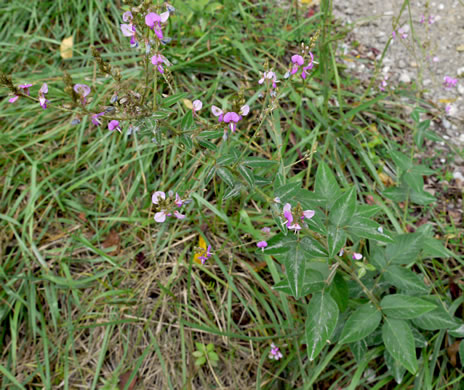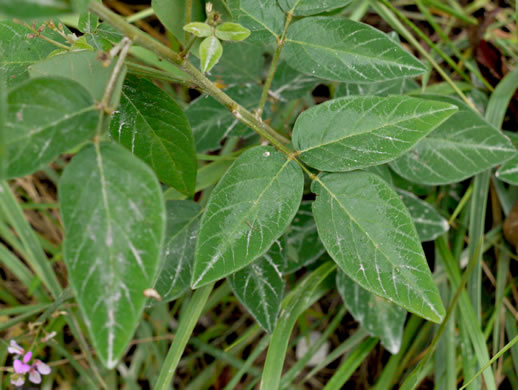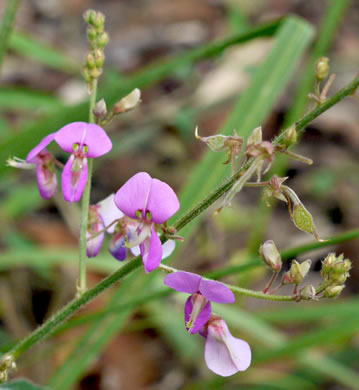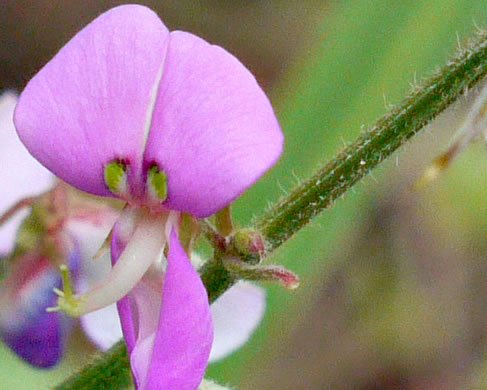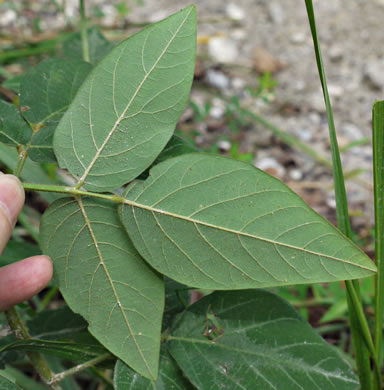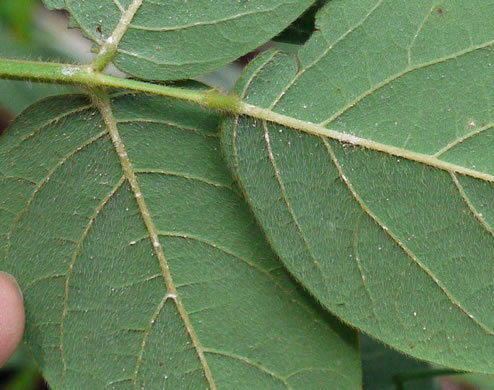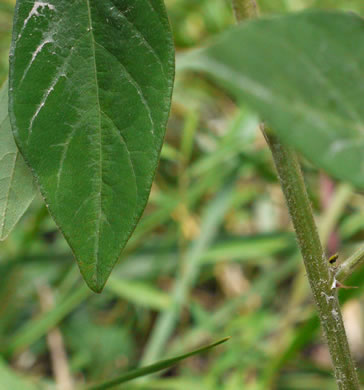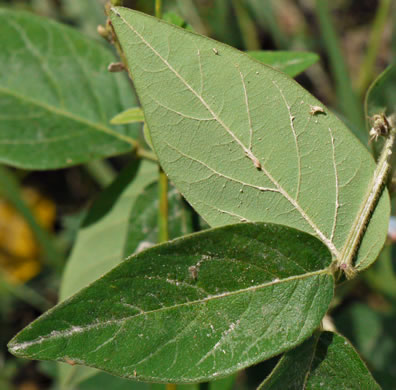Spermatophytes (seed plants): Angiosperms (flowering plants): Eudicots: Core Eudicots: Rosids: Fabids: Fabales
WEAKLEY'S FLORA OF THE SOUTHEASTERN US (4/24/22):
Desmodium nuttallii
FAMILY
Fabaceae
Go to FSUS key
Dig deeper at SERNEC, a consortium of southeastern herbaria.
Learn more about Nuttall's Tick-trefoil from the Vascular Plants of North Carolina.
SYNONYMOUS WITH
PLANTS NATIONAL DATABASE:
Desmodium nuttallii
FAMILY
Fabaceae
SYNONYMOUS WITH Native & naturalized Leguminosae (Fabaceae) of the US (Isely, 1998)
Desmodium nuttallii
SYNONYMOUS WITH VASCULAR FLORA OF THE CAROLINAS (Radford, Ahles, & Bell, 1968) 098-26-019:
Desmodium nuttallii FAMILY Fabaceae
INCLUDED WITHIN Britton & Brown Illus Flora of Northeast US & adjacent Canada (Gleason, 1952)
Desmodium viridiflorum
INCLUDED WITHIN Manual of the Southeastern Flora (Small, 1933, 1938)
Meibomia viridiflora
COMMON NAME:
Nuttall's Tick-trefoil
To see larger pictures, click or hover over the thumbnails.
JK Marlow jkm140906_273
September Swain County NC
Leaves glabrate to moderately appressed-pilose above, per Vascular Flora of the Carolinas (Radford, Ahles, & Bell, 1968).
![]() COMPARE
Beggar's Lice (Tick-trefoil) species
COMPARE
Beggar's Lice (Tick-trefoil) species
JK Marlow jkm140906_279
September Swain County NC
Loment more or less arching with 2-4 segments, rounded both above and below, per Vascular Flora of the Carolinas (Radford, Ahles, & Bell, 1968).
JK Marlow jkm140906_279b
September Swain County NC
Bracts (subtending clusters of 2-3 flowers) usually villous, per Weakley's Flora (2012).
JK Marlow jkm140906_291
September Swain County NC
Leaflets cinereous, or villous, on the lower surface, per Weakley's Flora (2012).
JK Marlow jkm140906_291b
September Swain County NC
Closely spreading-villous & often velvety below, but reticulum gen. visible, per Native and Naturalized Leguminosae (Fabaceae) of the United States (Isely, 1998).
JK Marlow jkm140906_298
September Swain County NC
This and D. viridiflorum are the velvety-pubescent eastern species, per Native and Naturalized Leguminosae (Fabaceae) of the United States (Isely, 1998).
WEAKLEY'S FLORA OF THE SOUTHEASTERN US (4/24/22):
Desmodium nuttallii
FAMILY
Fabaceae
SYNONYMOUS WITH
PLANTS NATIONAL DATABASE:
Desmodium nuttallii
FAMILY
Fabaceae
SYNONYMOUS WITH
Native & naturalized Leguminosae (Fabaceae) of the US (Isely, 1998)
Desmodium nuttallii
SYNONYMOUS WITH
VASCULAR FLORA OF THE CAROLINAS (Radford, Ahles, & Bell, 1968) 098-26-019:
Desmodium nuttallii
FAMILY
Fabaceae
INCLUDED WITHIN
Britton & Brown Illus Flora of Northeast US & adjacent Canada (Gleason, 1952)
Desmodium viridiflorum
INCLUDED WITHIN
Manual of the Southeastern Flora (Small, 1933, 1938)
Meibomia viridiflora
If a search such as "Carex leptalea var. leptalea" doesn't deliver the results you want, try "Carex leptalea".
Or, to minimize chances of a misspelling, try just "Carex le".
Less is more: If "pencil flower" doesn't deliver the results you want, try "pencil".

